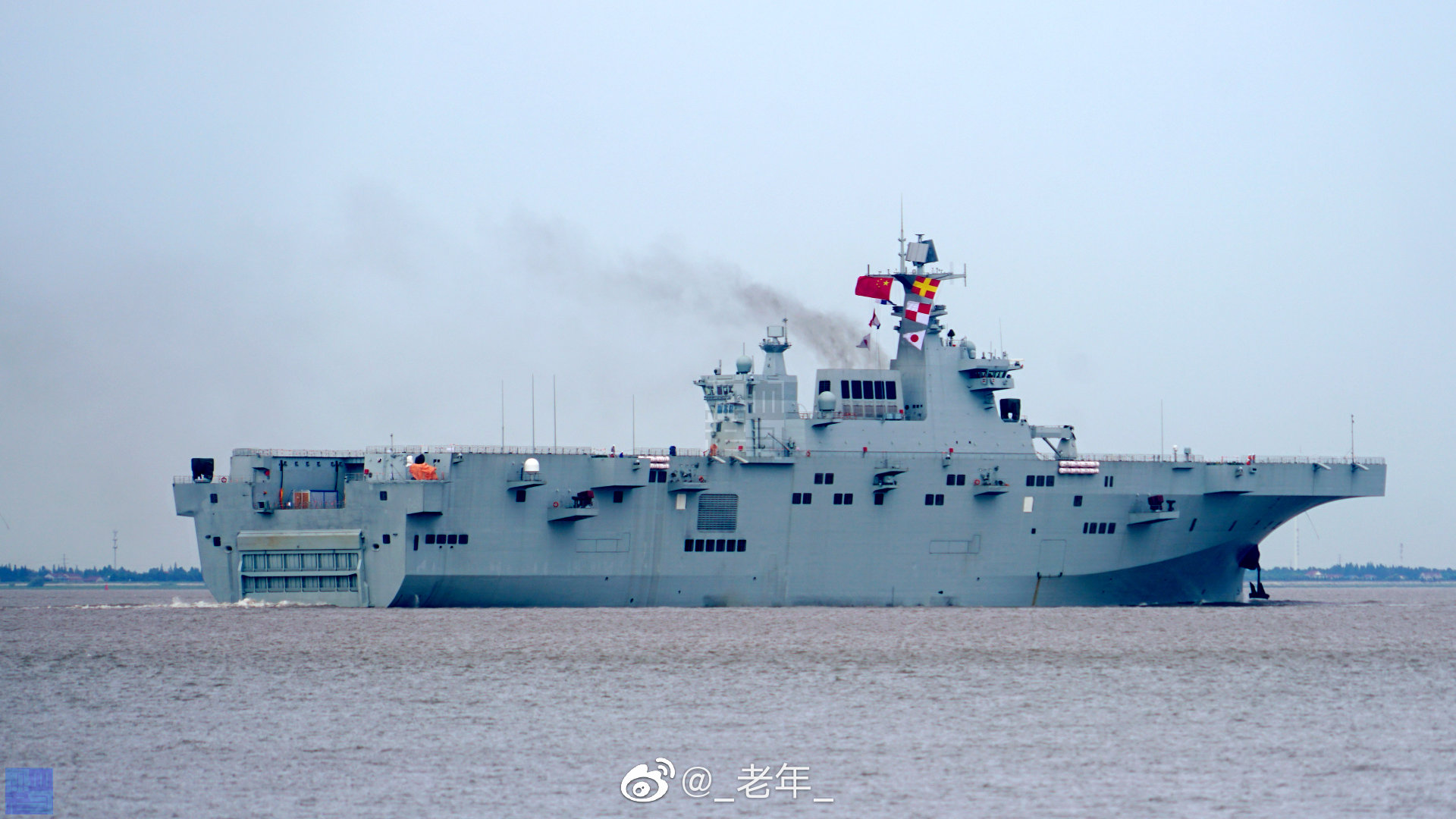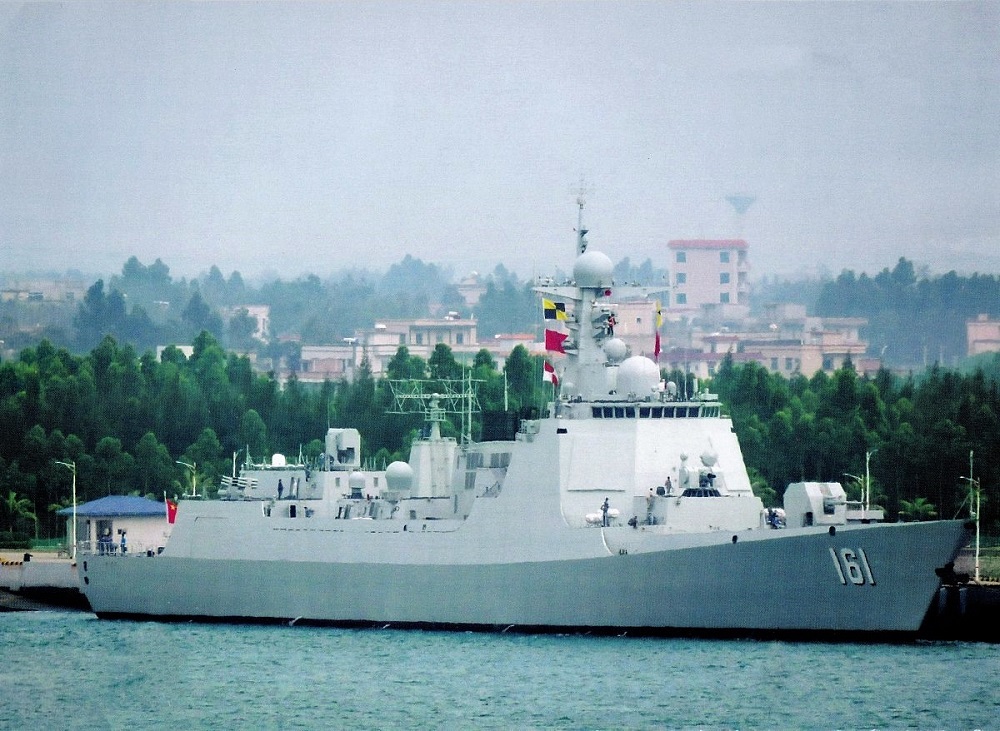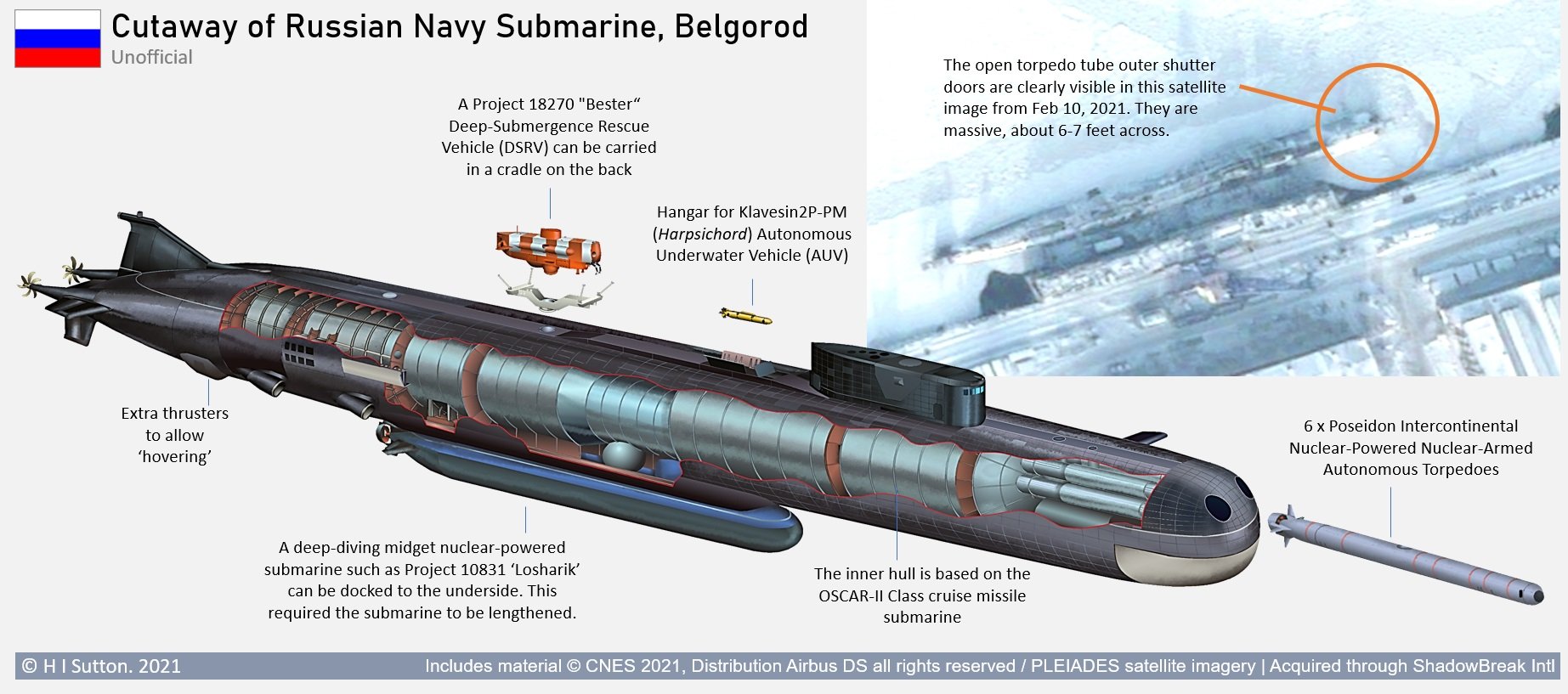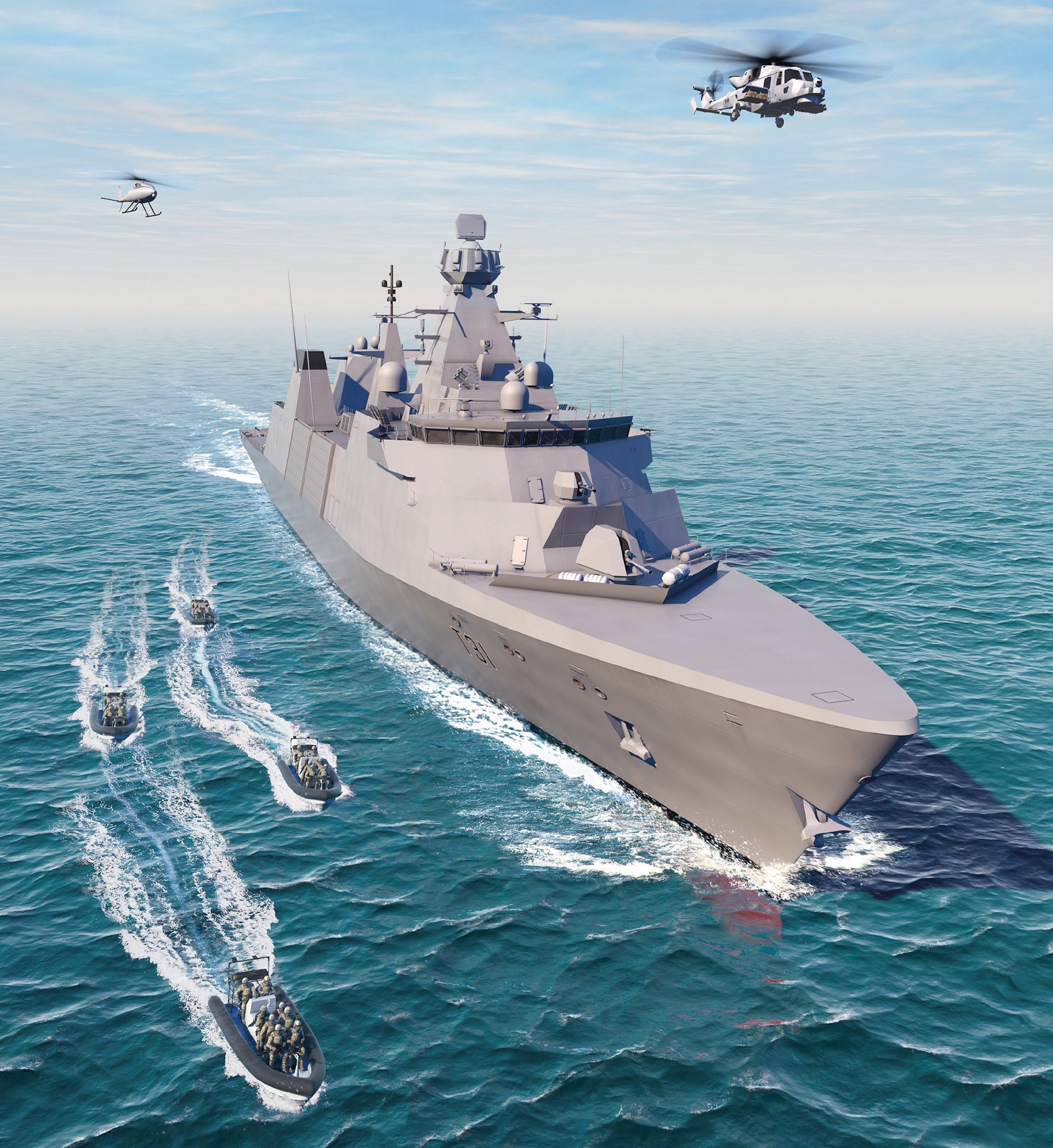This post is part of a series looking back at the top naval stories from 2021.
This year U.S. rivals and allies made major strides in developing expanded naval capabilities from expanding aircraft carrier capability to developing new hypersonic weapons.
AUKUS

In September, the U.S. and U.K. announced an agreement to share its nuclear submarine technology with Australia as part of a technology transfer agreement between London, Washington and Canberra.
“Our first initiative as part of AUKUS is . . . a shared ambition to support Australia’s desire to acquire nuclear-powered submarines and we will launch a trilateral effort of 18 months, which will involve teams – technical and strategic and navy teams from all three countries – to identify the optimal pathway of delivery of this capability,” a senior Biden administration official told reporters at the time.
The addition of nuclear attack boats to the Royal Australian Navy drew protests from Beijing.
“The Australian Navy going nuclear will give them the legs to be viable in areas of the Western Pacific,” a retired U.S. submarine admiral told USNI News at the time.
“This is a message to China. China economically punished Australia and this could be a response to that.”
The agreement nullified a deal between France and Australia to build conventionally powered submarines for the RAN, causing a spat with Paris.
The U.S., U.K. and Australia are now in the midst of a study period to refine how best to proceed with the construction. The agreement also opens the door for sharing of other defense technology.
China

The People’s Liberation Army Navy grew to 355 ships – reaching the U.S. Navy’s 2016 fleet size goal, according to the Pentagon’s November China military report.
“Towards the PRC’s goal of building a ‘strong and modernized naval force,’ the PLAN is an increasingly modern and flexible force that has focused on replacing its previous generations of platforms that had limited capabilities in favor of larger, modern multi-role combatants,” the report reads. “As of 2020, the PLAN is largely composed of modern multi-role platforms featuring advanced anti-ship, anti-air, and anti-submarine weapons and sensors. The PLAN is also emphasizing maritime joint operations and joint integration within the PLA. This modernization aligns with the PRC’s growing emphasis on the maritime domain and increasing demands for the PLAN to operate at greater distances from China.”
By 2030, the Chinese fleet is set to grow to 460 hulls, according to the Pentagon report.
“Towards the PRC’s goal of building a ‘strong and modernized naval force,’ the PLAN is an increasingly modern and flexible force that has focused on replacing its previous generations of platforms that had limited capabilities in favor of larger, modern multi-role combatants,” the report reads. “As of 2020, the PLAN is largely composed of modern multi-role platforms featuring advanced anti-ship, anti-air, and anti-submarine weapons and sensors. The PLAN is also emphasizing maritime joint operations and joint integration within the PLA. This modernization aligns with the PRC’s growing emphasis on the maritime domain and increasing demands for the PLAN to operate at greater distances from China.”

The third PLAN aircraft carrier continued to take ship at the Jingnan shipyard outside of Shanghai and is close to launching CSIS analysts surmised in November.
Unlike the first two Chinese carriers based on legacy Russian designs, the Type 003 feature will a catapult design with dimensions closer int size to the U.S. Nimitz and Ford-class carriers, according to Naval News.
In January, U.S. officials outlined the Chinese intent to use long-range ballistic missiles to put rival ships at risk.
“They’re pouring a lot of money in the ability to basically rim their coast in the South China Sea with anti-ship missile capability. It’s a destabilizing effort in the South China Sea, in the East China Sea, all those areas. When their claims of some of these contested islands – they’re militarizing those areas,” Vice Adm. Jeffrey Trussler, the deputy chief of naval operations for information warfare (OPNAV N2/N6) at a virtual event hosted by the Intelligence and National Security Alliance.
In November, USNI News reported that China had created a complex target range in the Taklamakan Desert in Central China in the shape of U.S. aircraft carriers.
“The mockups of several probable U.S. warships, along with other warships (mounted on rails and mobile), could simulate targets related to seeking/target acquisition testing,” according to the AllSource Analysis summary, which said there are no indications of weapon impact areas in the immediate vicinity of the mockups. “This, and the extensive detail of the mockups, including the placement of multiple sensors on and around the vessel targets, it is probable that this area is intended for multiple uses over time.“
In October, The Financial Times reported the Chinese had tested a hypersonic weapon capable of delivering a nuclear weapon.
“I don’t know if it’s quite a Sputnik moment, but I think it’s very close to that. It has all of our attention,” chairman of the Joint Chiefs of Staff Gen. Mark Milley told Bloomberg.
Russia

New details of the new Russian strategic nuclear submarine Belgorod emerged in February, USNI News reported.
The submarine will field the Poseidon nuclear torpedo.
“The school-bus sized torpedo is a strategic weapon that is designed to slip under the U.S. ballistic missile defense network. The weapon is designed to ‘destroy important economic installations of the enemy in coastal areas and cause guaranteed devastating damage to the country’s territory by creating wide areas of radioactive contamination, rendering them unusable for military, economic or other activity for a long time,’ according to a 2015 translation of the initial document by the BBC,” reported USNI News.
Like the Chinese, the Russians are continuing to develop hypersonic weapons.
In October, the Russian Navy test launched the Tsirkon missile is launched from a submarine in Barents Sea after four tests from surface ships in 2020, reported Naval News.
U.K.

In September, the U.K. Royal Navy cut steel for the first in its new class of Type-31 frigates.
“With the fall in the total number of in-service frigates and destroyers in the Royal Navy, the service is expected to reach a record low of 16 to 17 hulls by the mid-late 2020s. The five Type 31 ‘Inspiration-class’ frigates are part of the drive to push the total back to more than 19,” reported USNI News.
The U.K. also continued progress on its first two Dreadnought-class nuclear ballistic missile submarines being built in conjunction with the U.S. Columbia-class SSBNs.
In October, the HMS Prince of Wales (R07) was declared operational by the Royal Navy, joining sister ship HMS Queen Elizabeth (R06) that had just completed its maiden deployment in December.
The U.K. closed out the year with a report to Parliament in December that called for the Royal Navy to expand.
Japan
In October, Japan continued developing its aircraft carrier capability by testing U.S. Marine F-35B Lighting II Joint Strike Fighter from the “Bats” of Marine Fighter Attack Squadron (VMFA) 242 aboard JS Izumo (DDH-183).
“This verification is the first time for an F-35B fighter to land on a [Japanese Maritime Self-Defense Force] vessel, and Japan is working to improve its capabilities in the maritime and air domains by steadily upgrading the Izumo-class destroyer in order to acquire the ability to operate STOVL aircraft,” reads a Tuesday statement from the JMSDF.
The Japanese Self Defense Force plans to by 42 F-35Bs to operate from Izumo and its sister ship JS Kaga (DDH-184).
In December, the Japanese cabinet approved a $47 billion 2022 budget that includes five surface ships and a submarine.
“That includes $957 million allocated for the ninth and tenth ship of the Mogami-class frigates, $641 million for a sixth Taigei-class submarine, $116.7 million for a fifth Awaji-class minesweeper, $242.9 million for an oceanographic research ship and $170.7 million for a fourth Hibiki class ocean surveillance ship,” USNI News reported.
South Korea

German shipbuilder TKMS. The class represents the second stage of submarine development in
South Korea undertaken by DSME that was a key part of the transition to an indigenous SSK design
capability. ROK Armed Forces Photo
The Republic of Korea Navy is in the process of expanding its fleet beyond the threat from North Korea into a more capable blue water force, USNI News reported.
“South Korea’s new Mid-Term Defence Plan (MTDP) 2021-2025, published in late 2020, reinforced this change in direction toward more expeditionary operations. It increased the defense budget by 6.5 percent, providing some $235 billion over five years with about one-third (KW100 trillion) for the procurement of new equipment,” USNI News reported.
The new ships will include the CVX – a 30,000-ton light carrier, a modified class of guided-missile destroyers and a ballistic missile submarine.
“Eventually, the ROKN plans to form a genuinely ocean-going surface fleet from early 2030s, consisting of three flotillas, something like Fleet Escort Force of Japanese Maritime Self-Defense Forces; along with KDX-II, KDX-III destroyers and other new ships in the future,” defense researcher Kim Jae Yeop told USNI News.





